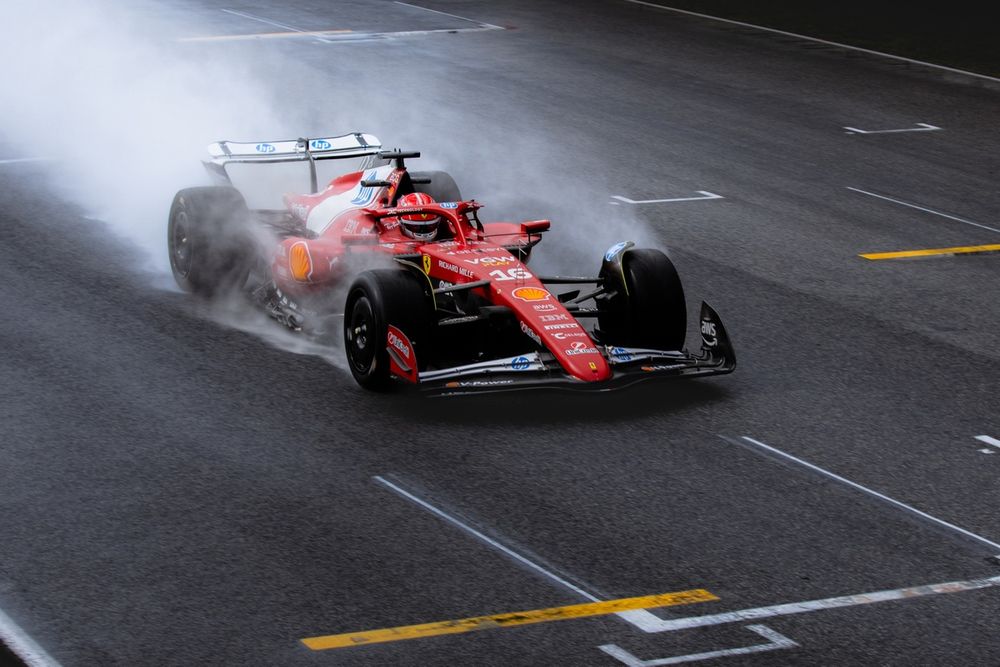In four months, Formula 1 teams will bring their first iteration of the all-new 2026 cars to an end-of-January shakedown test in Barcelona. But to streamline the development process, predicting those pre-season performance levels has to be done right now.
The vast scale of the regulation changes, with new rules on both the chassis and power unit side, means they are braced for arguably the most challenging regulation shift in F1 history. Teams are having to fit the new chassis around vastly changed, extremely efficient hybrid engines, which feature a near 50/50 split between electric energy and combustion power – a much bigger electric component than the current hybrids.
Every team has fully switched development focus on 2026 for some time. But as that January deadline creeps up on the 11 squads, the rapid rate of aero development behind the scenes means teams are still chasing moving targets, having to predict the downforce levels they will have when they rock up in winter testing as they put virtual cars in the simulator today.
“The car evolves week-on-week and as the car performance changes, the results from the simulations change,” Mercedes’ trackside engineering director Andrew Shovlin explained.
“There’s an element where it’s a moving target trying to make sure that the chassis package is optimised for the engine and the power unit package. So we’re building the complexity there, but it will be a difficult year.
“You’ve got a virtual representation of the car that we can run in a simulator. But you’re trying to predict where we’re going to be in four months’ time in terms of downforce levels, because there’s no point in doing all your work with something that will never actually run on the track.
F1 2026 FIA car renders
Photo by: FIA
“You want to be doing it with something that’s representative of what you’re going to roll out with.”
Alongside a revised power unit and ECU, and chassis rules that move away from ground effect and feature active aerodynamics, tyre supplier Pirelli is also introducing narrower tyres, while the weight limit is coming down from 800kg to 768kg – despite the increase in battery weight. F1 is also switching to sustainable fuels, and there is still work to be done to nail down the exact engine deployment parameters in order to ease concerns over how the 2026 F1 cars will be able to race each other.
Given the huge number of variables and the usual smoke and mirrors clouding paddock gossip, knowing who will be in good shape as the 2026 season kicks off in Melbourne will only become apparent over the two official winter tests in Bahrain in February, as teams are still in various stages of that development process.
One indication of that was Charles Leclerc’s admission in July that he thoroughly disliked how the 2026 Ferrari he tried on the simulator needed to be driven, which Williams boss James Vowles said was an indication of how early in its development cycle the Scuderia was at that stage compared to his team, or at least how premature the virtual model was that Leclerc sampled.
Shovlin suggested Pirelli is also on the receiving end of some gamesmanship as teams are reporting their downforce levels to help the manufacturer settle on its construction and compounds.
“Pirelli are saying they’re getting all sorts of different suggestions of where cars are going to be on end-of-straight loads,” Shovlin added.

Charles Leclerc testing Pirelli tyres at Mugello with a lower downforce Ferrari mule car
Photo by: Pirelli
“But we’re all developing our cars in isolation. No one’s seen anything, and these days you don’t really hear anything from any other teams as to how they’re getting on, so inevitably the most diversity you probably see is going to be straight off when everyone rolls their car out.
“The reality is some will be doing better than others and there may be a case that those that are doing particularly well want to downplay where they are. Some people might be presenting where they think they’ll get to, other people might be presenting where they are today.”
But Shovlin didn’t buy into concerns that cars will have a vast performance gap at the start of 2026 as the differences in power unit performance, aerodynamics and the ability to get down to a stricter weight limit shake out.
“I suspect with the way the rules are, the differences won’t be vast when we roll out,” he said, making parallels with the current rules, which were initially thought to be very descriptive, but turned out to have a lot of room for innovation on a more detailed level.
“You’ll probably be in a similar boat to what we’ve got now where you can spot one car from another. If you painted them all the same colour you could probably tell which was which.
“There are some areas of the car that will all look pretty familiar because the regulations don’t have a great deal of freedom. And then over time teams exploit areas more and more and you start to get more detail.”

